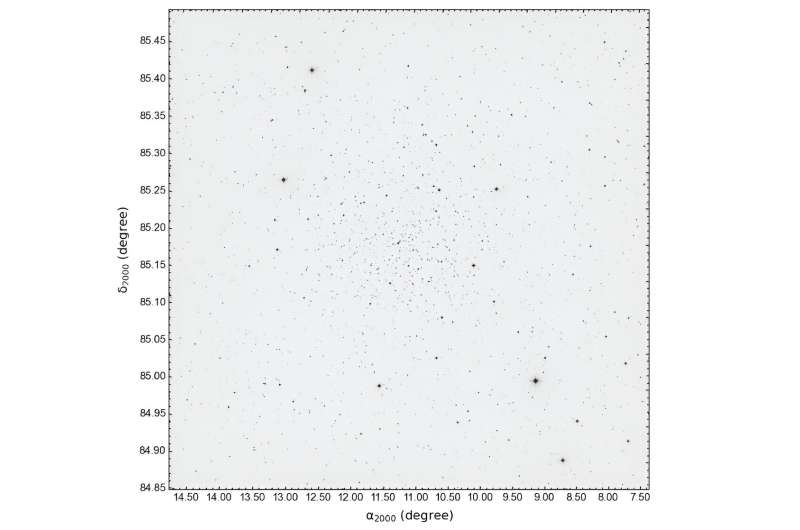April 30, 2024 report
This article has been reviewed according to Science X's editorial process and policies. Editors have highlighted the following attributes while ensuring the content's credibility:
fact-checked
preprint
trusted source
proofread
Researchers explore an old galactic open cluster

Using data from ESA's Gaia satellite, astronomers from Turkey and India have investigated NGC 188—an old open cluster in the Milky Way. Results of the study, published April 19 on the pre-print server arXiv, deliver important insights into the parameters and properties of this cluster.
Open clusters (OCs), formed from the same giant molecular cloud, are groups of stars loosely gravitationally bound to each other. So far, more than 1,000 of them have been discovered in the Milky Way, and scientists are still looking for more, hoping to find a variety of these stellar groupings. Expanding the list of known galactic open clusters and studying them in detail could be crucial for improving our understanding of the formation and evolution of our galaxy.
NGC 188 (also known as Melotte 2 or MWSC 0074) is a galactic OC estimated to be several billion years old. Given that the cluster is located in a relatively low contaminated region of the Milky Way, it is an excellent object to perform detailed observations.
However, many parameters of NGC 188 still remain uncertain as previous studies point to different results. That is why a team of astronomers led by Deniz Cennet Dursun of the Istanbul University in Turkey, decided to take a closer look at this OC. They analyzed photometric, astrometric, and spectroscopic data from the Gaia Data Release 3 (DR3) to resolve discrepancies in the archival datasets.
"This paper aims to determine the fundamental parameters that define the old open cluster of NGC 188 using advanced analytical techniques, such as isochrone fitting and SED [spectral energy distribution] analyses," the researchers wrote.
First of all, Dursun's team identified 868 most likely member stars of NGC 188 (within the limiting radius of 15 arcminutes) out of which 19 turned out to be blue straggler stars (BSSs). Based on this sample, they determined the properties of the cluster.
The study found that NGC 188 is a member of the thin-disk component of the Milky Way and orbits in a boxy pattern outside of the solar circle, with an orbital period of about 259 million years. The data indicate that the forming region of the cluster is outside the solar circle.
According to the paper, NGC 188 is about 7.7 billion years old and has a metallicity at a level of -0.03 dex. The distance to the cluster was estimated to be approximately 6,000 light years.
The study also found that the determined effective temperatures and surface gravities of NGC 188's members align well with predictions based on stellar evolution models across different luminosity classes.
According to the authors of the paper, their study demonstrates that with the increase in the number of photometric data, the fundamental astrophysical parameters of OCs can be determined with greater precision.
More information: Deniz Cennet Dursun et al, SED Analysis of the Old Open Cluster NGC 188, arXiv (2024). DOI: 10.48550/arxiv.2404.13115
Journal information: arXiv
© 2024 Science X Network





















